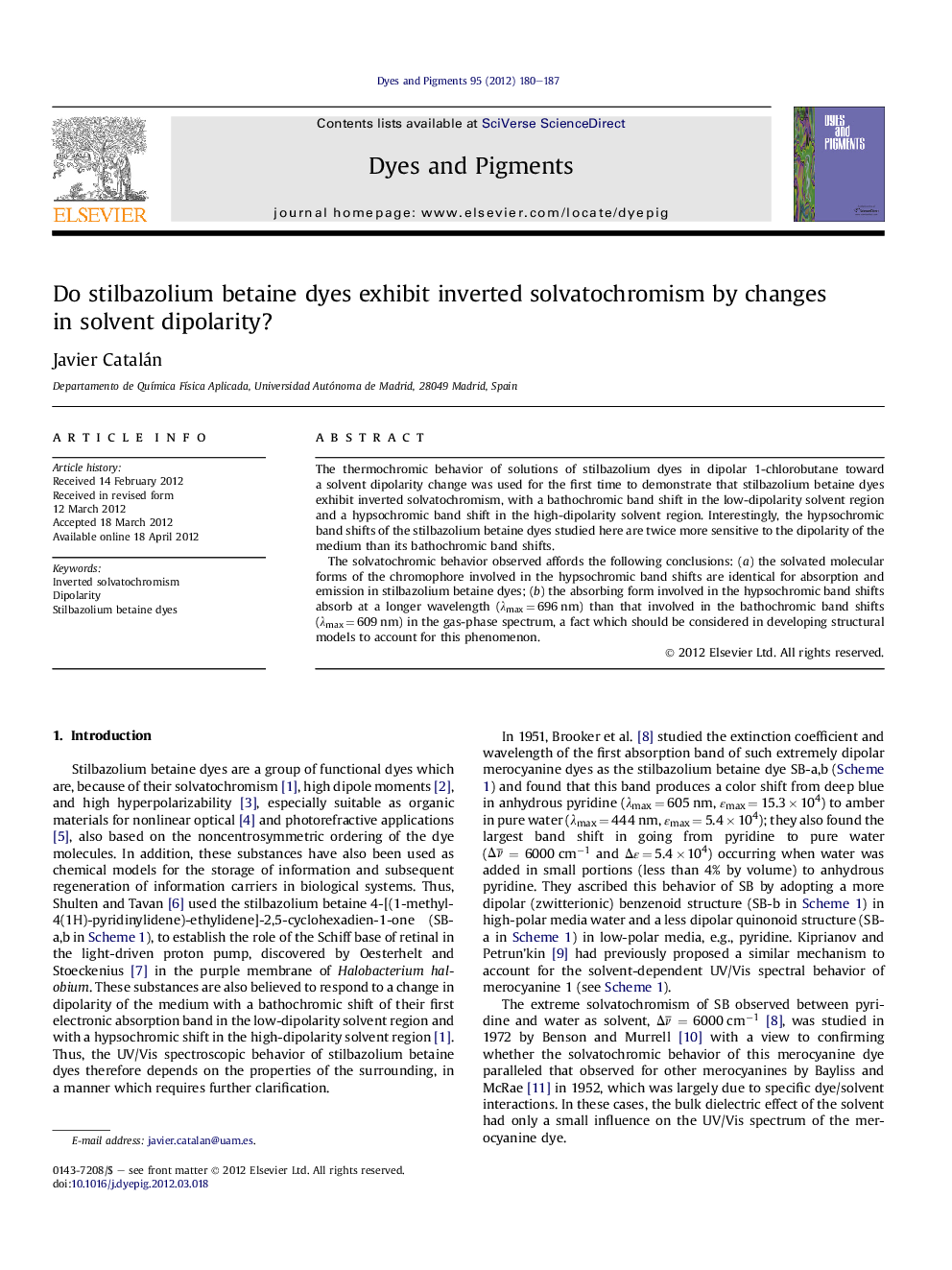| Article ID | Journal | Published Year | Pages | File Type |
|---|---|---|---|---|
| 176786 | Dyes and Pigments | 2012 | 8 Pages |
The thermochromic behavior of solutions of stilbazolium dyes in dipolar 1-chlorobutane toward a solvent dipolarity change was used for the first time to demonstrate that stilbazolium betaine dyes exhibit inverted solvatochromism, with a bathochromic band shift in the low-dipolarity solvent region and a hypsochromic band shift in the high-dipolarity solvent region. Interestingly, the hypsochromic band shifts of the stilbazolium betaine dyes studied here are twice more sensitive to the dipolarity of the medium than its bathochromic band shifts.The solvatochromic behavior observed affords the following conclusions: (a) the solvated molecular forms of the chromophore involved in the hypsochromic band shifts are identical for absorption and emission in stilbazolium betaine dyes; (b) the absorbing form involved in the hypsochromic band shifts absorb at a longer wavelength (λmax = 696 nm) than that involved in the bathochromic band shifts (λmax = 609 nm) in the gas-phase spectrum, a fact which should be considered in developing structural models to account for this phenomenon.
Graphical abstractFigure optionsDownload full-size imageDownload as PowerPoint slideHighlights► We demonstrate that stilbazolium betaine dyes exhibit inverted solvatochromism. ► The behavior of solutions of stilbazolium dyes in dipolar 1-chlorobutane toward a solvent dipolarity change was used. ► Their right absorbing forms in the solvent-induced hypsochromic and bathochromic band shifts are different.
